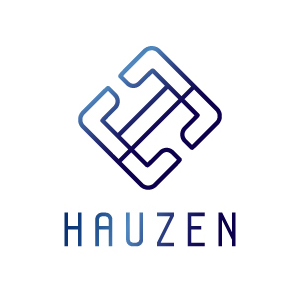In January 2022, the Hong Kong Monetary Authority (“HKMA”), Hong Kong’s de facto central bank and banking regulator, issued a discussion paper inviting submission from various stakeholders on their views on giving priority to the development of a regulatory framework for “payment-related stablecoins” (i.e. stablecoins that may have the potential to develop into widely acceptable means of payment).
The Financial Stability Board defines stablecoins as crypto-assets that aim to maintain a stable value relative to a specified asset, or a pool or basket of assets.
At the end of the consultation period, the HKMA had received 58 submissions, most indicating their support for the HKMA’s proposal to bring stablecoins under regulation.
Key Features
The key features of the proposed regulatory regime as published in the conclusion of the discussion paper is summarized in the following table:-
| What would be regulated? | Key activities relating to stablecoins will be subject to a mandatory licensing regime.HKMA will adopt a risk-based approach in reviewing the stablecoin structures with reference to their monetary and financial stability risks.The proposed regulatory regime will carry some flexibility to allow the authorities to adjust the regulatory scope to cope with the rapidly moving market and international regulatory developments, and to scope in other stablecoin structures in the future. |
| What key activities will be regulated? | Key activities that are related to an in-scope stablecoin, such as:-Governance: the establishment and maintenance of the rules governing an in-scope stablecoin arrangementIssuance: issuing, creating or destroying an in-scope stablecoinStabilisation: the stabilisation and reserve management arrangements of an in-scope stablecoinWallets: the provision of services that allow the storage of the users’ cryptographic keys which enables access to the users’ holdings of an in-scope stablecoin and management of such stablecoin. |
| What entities would require a licence from HKMA? | Entities that:-Conduct a regulated activity in Hong Kong.Actively market a regulated activity to the public of Hong Kong.Conduct a regulated activity which concerns a stablecoin that purports to reference to the value of the Hong Kong dollar (see Note 1 below).The authority is of the opinion that the entity should be so regulated having regard to public interest. |
| What are the key regulatory principles? | Comprehensiveness of the framework: Regulatory requirements will be developed in areas such as ownership, governance, management, financial resources, risk management, AML/CFT, user protection, audit and disclosure requirements.Full backing and redemption at par:The value of reserve assets of a stablecoin arrangement should meet the value of the outstanding stablecoins at all times and should be high quality and highly liquid.Stablecoins that reference their value based on algorithm or arbitrage will not be accepted under the proposed regulatory regime.Holders of the stablecoins should be able to redeem the stablecoins into the referenced fiat currency within a reasonable time.Principal business restriction: The regulated entity should not conduct activities that deviate from its principal business as permitted under its own licences. |
| What’s the target implementation date? | The regime is expected to be implemented in 2023 or 2024. |
| What’s the legislative approach? | The HKMA is currently in the process of deciding whether to introduce new legislation or to amend the existing legislative framework.The HKMA also notes that the activities proposed to be regulated may overlap with those under other financial regulatory regimes in Hong Kong. The HKMA will conduct additional assessments and continue to collaborate with other regulators and stakeholders to identify regulatory overlaps or gaps. |
Note 1: There is a common misconception that the new regime intends to only apply to stablecoins pegged to the Hong Kong Dollars, which are uncommon. This is not correct. Whilst it is true that the HKMA specifically indicated that any entity conducting stablecoin-related activities in which the stablecoins are referenced to Hong Kong Dollar should need to obtain a licence and subject to regulation due to the consideration that such Hong Kong Dollar pegged stablecoins would have much higher likelihood of adoption and usage by the general public in Hong Kong (and hence higher monetary and financial stability concerns and the need for enhanced user protection), it should be kept in mind that the over-arching guiding principles of the HKMA’s stance is that they will adopt a risk-based approach in reviewing stablecoin structures and will weave flexibility into the proposed regime to allow adjustments to be made to scope in other stablecoin structures.
Impact of the New Regime
The new regulatory regime is significant for stablecoins in general, and Hong Kong in particular. Stablecoins such as USDT and USDC are widely used as alternative currency for payment, and are already regulated in neighbouring Singapore under its Payment Services Act. As at the date of wiring, USDT sees an average daily transaction volume of US$22.09 billion and USDC sees an average daily transaction volume of US$2.86 billion.
At the opening ceremony of the Hong Kong Web 3.0 Association, a cross-industry and non-profit organization, which aims to promote the construction of the digital new world Web 3.0 “third-generation Internet” ecological environment in Hong Kong, the Hong Kong Chief Executive pointed out that Web 3.0 plays a key role in the development of financial technology, and that he looks forward to the association and the Government working together to meet the huge opportunities brought about by the development of Web3 and the virtual asset industry. He was also quoted saying that the development of Web 3.0 is at the golden starting point and that Hong Kong must dare to become the leader of this wave of innovation.
This is thus the most appropriate time for Hong Kong to step up its regulatory regime in relation not virtual asset activities.
The HKMA will issue a more detailed consultation document with more concrete information about the proposed regulatory regime in due course.






